Aluminum gutters are a common type of gutter system used in residential and commercial buildings to collect and redirect rainwater from the roof. Here’s some information about aluminum gutters.
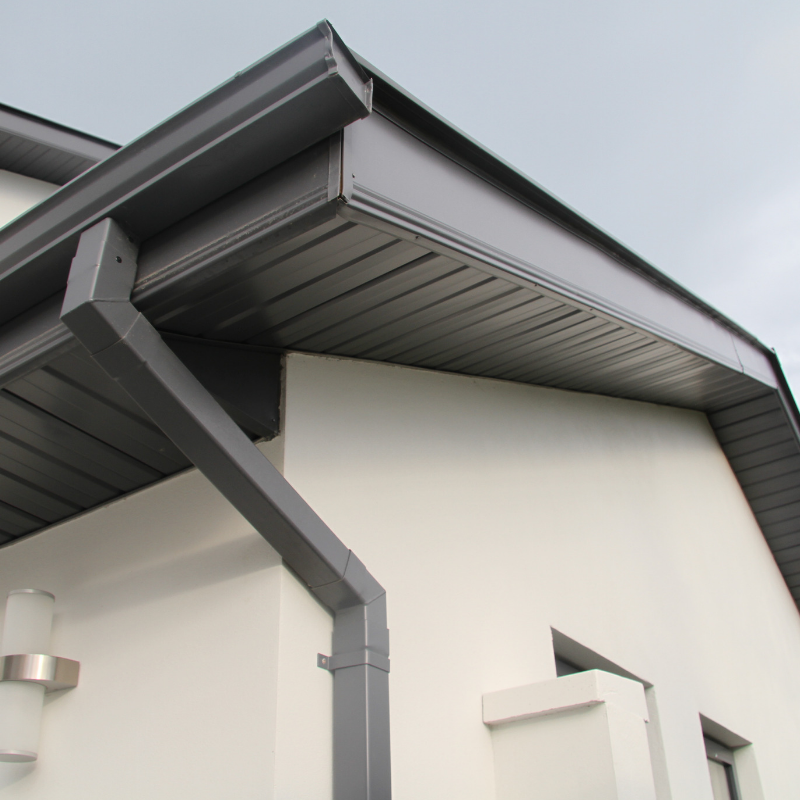
Brief introduction of aluminum gutters
Types: Aluminum gutters are a system for collecting and draining roof precipitation. They are usually found in a K-shaped or semi-circular shape and are suitable for different architectural styles and rainfall amounts.
Installation location: Aluminum gutters are installed below the eaves, along the edge of the roof gable. They can be attached to the eave guard or suspended from the edge of the eave.
Function: The primary function of gutters is to collect rainwater from the roof and direct it to a drain, away from the foundation of the building. They prevent water from dripping directly from the roof and avoid soil erosion, foundation damage or water pooling around the building.
Installation: Gutters are usually secured to the eaves guard by means of brackets or hooks. Gutters need to be installed at a certain slope to ensure a smooth flow of water to the drain.
Material: Aluminum sinks are made of lightweight, corrosion-resistant aluminum for durability and long life.
Maintenance: Aluminum sinks need to be cleaned regularly to remove accumulated debris and to ensure that water flows freely. They also need to be checked regularly for leaks or damage.
Functionality
Material: Aluminum gutters are made from aluminum coil/strip, a lightweight and durable metal known for its corrosion resistance. The aluminum used in gutters is typically coated or treated to enhance its durability and protect against the elements. The aluminum used in gutters is typically coated or treated to enhance its durability and protect against the elements.
Roof protection: Aluminum gutters are installed to help protect roofs and house structures. They effectively collect and remove water from the roof, preventing water from pooling on the roof and seeping into the building, thus reducing the risk of flooding and water damage.
Rainwater harvesting: Aluminum gutter systems can be used in conjunction with rainwater harvesting systems to collect and store rainwater for later use. This helps to conserve water resources and reduce water bills.
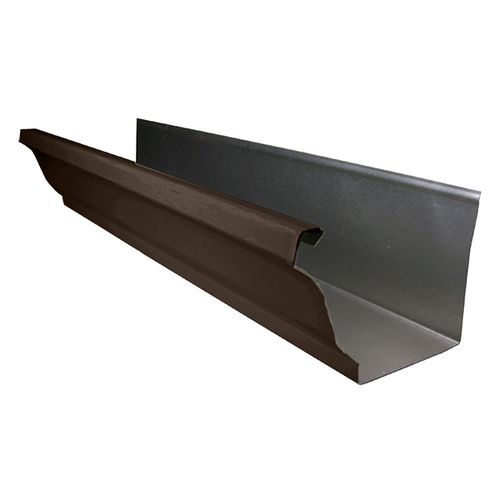
Advantages
Aluminum gutters offer several advantages. They are lightweight, making them easier to install compared to heavier materials like steel or copper. Aluminum is also resistant to rust and corrosion, ensuring long-term durability and low maintenance. Additionally, aluminum gutters are available in a Additionally, aluminum gutters are available in a variety of colors and styles using color-coated aluminum, allowing homeowners to choose a design that complements their building’s exterior.
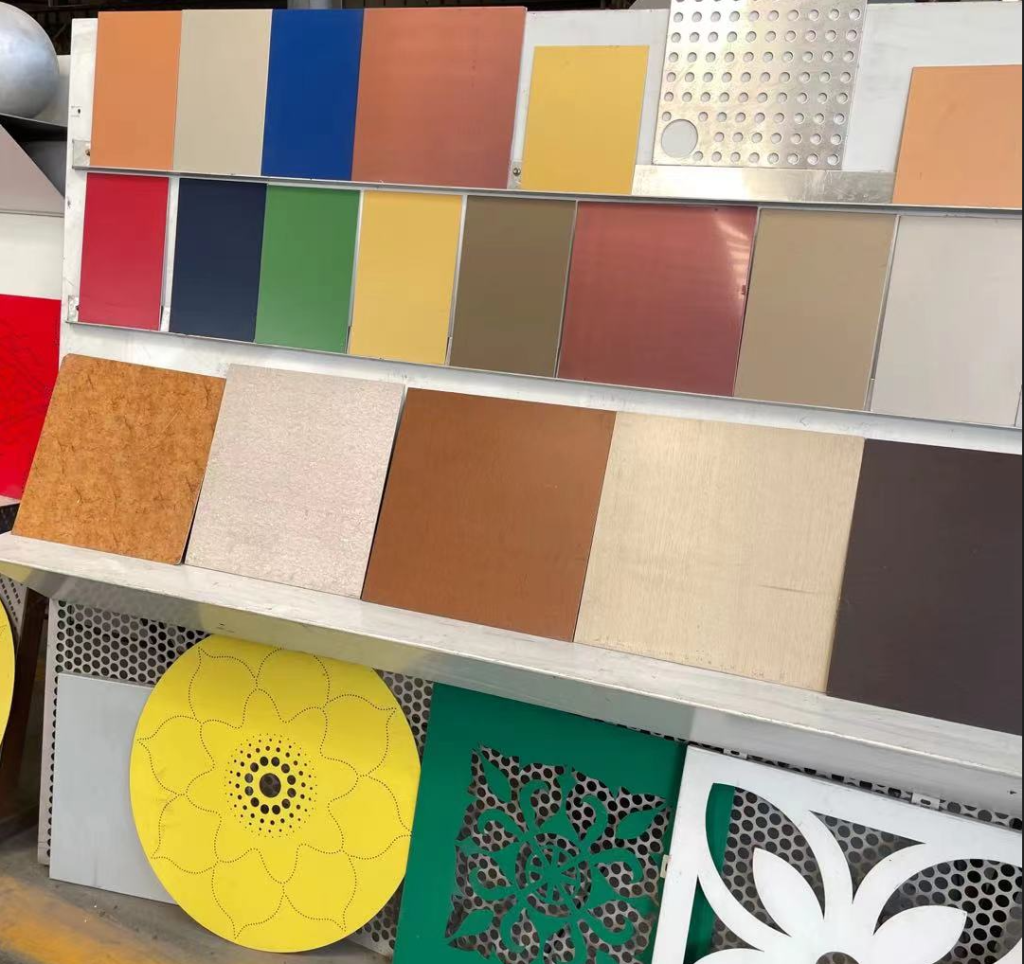
Maintenance: Aluminum gutters are relatively low maintenance. They should be regularly inspected for debris, such as leaves or twigs, which can clog the system. Cleaning the gutters periodically and ensuring downspouts are clear from obstructions will help maintain proper water flow and prevent potential damage. They should be regularly inspected for debris, such as leaves or twigs, which can clog the system.
Durability: Aluminum gutters are designed to withstand various weather conditions. They are resistant to rust, rot, and UV rays, ensuring their longevity even in harsh climates. They are resistant to rust, rot, and UV rays, ensuring their longevity even in harsh climates. However, severe impacts or heavy loads, such as falling tree branches or ladders, can dent or damage aluminum gutters.
Cost: Aluminum gutters are generally more affordable compared to materials like copper or zinc. The cost of aluminum gutters can vary depending on factors such as the gutter style, size, installation complexity, and the region’s labor and material costs. The cost of aluminum gutters can vary depending on factors such as the gutter style, size, installation complexity, and the region’s labor and material costs.
Environmentally friendly: Aluminum gutters are an environmentally friendly option. Aluminum is a recyclable material that can be reused through recycling, reducing resource consumption and environmental impact.
When considering aluminum gutters for your property, it’s advisable to consult with a professional gutter installer who can assess your specific needs When considering aluminum gutters for your property, it’s advisable to consult with a professional gutter installer who can assess your specific needs and provide guidance on the appropriate gutter system for your building.
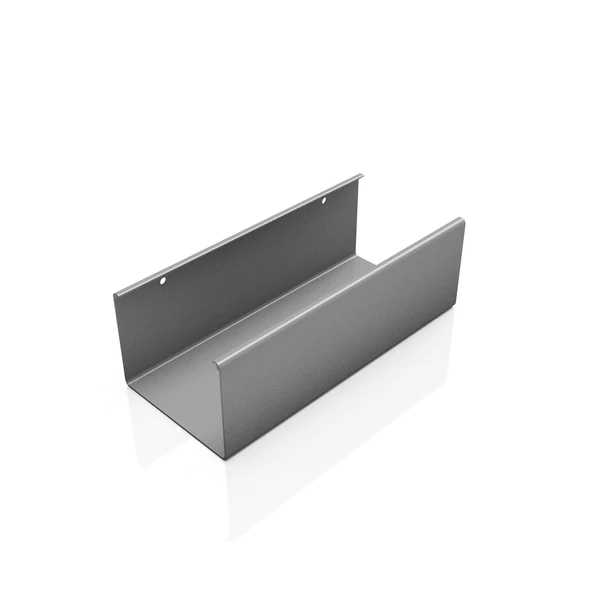
Material
Size, shape and color options
Aluminum gutters are often available in different sizes and shapes to accommodate different buildings. Common sizes include 5-inch and 6-inch widths, which can be selected based on the size of the roof and rain load. Shapes include K-shaped (K-style) and half-round, among others.
Aluminum gutters are available in a variety of color options to accommodate different architectural appearances. Some manufacturers offer standard colors such as white, brown and black, as well as custom colors to meet specific design requirements.
In summary, aluminum gutters are a reliable, durable and affordable drainage system option. Their lightweight nature, corrosion resistance, and diverse color and shape options make them ideal for many buildings. Choosing the proper aluminum gutter system and having it properly installed and maintained will help protect your home from flooding and water damage and ensure the effectiveness and reliability of your drainage system.
Yongsheng Aluminum Coil/Strip
Aluminum fascia can be customized to fit the specific dimensions and requirements of the roofline. It can be cut and shaped on-site or ordered in pre-formed lengths for easier installation.
The specifications and features of aluminum fascia may vary depending on the manufacturer and the specific product. When choosing aluminum fascia, it is advisable to consult a professional to ensure that they fit your roof structure and needs.
Alloy model: 1050、1060、1070、1100、3003、3004、5005、5052、5083、6061 etc.
Temper: O~H112 etc.
Thickness: 0.1 mm-6.5 mm
Width: 3mm-2600mm
Surface Treatment: Mill finish, coated, powder coated, anodized, embossed, polished mirror aluminum etc.
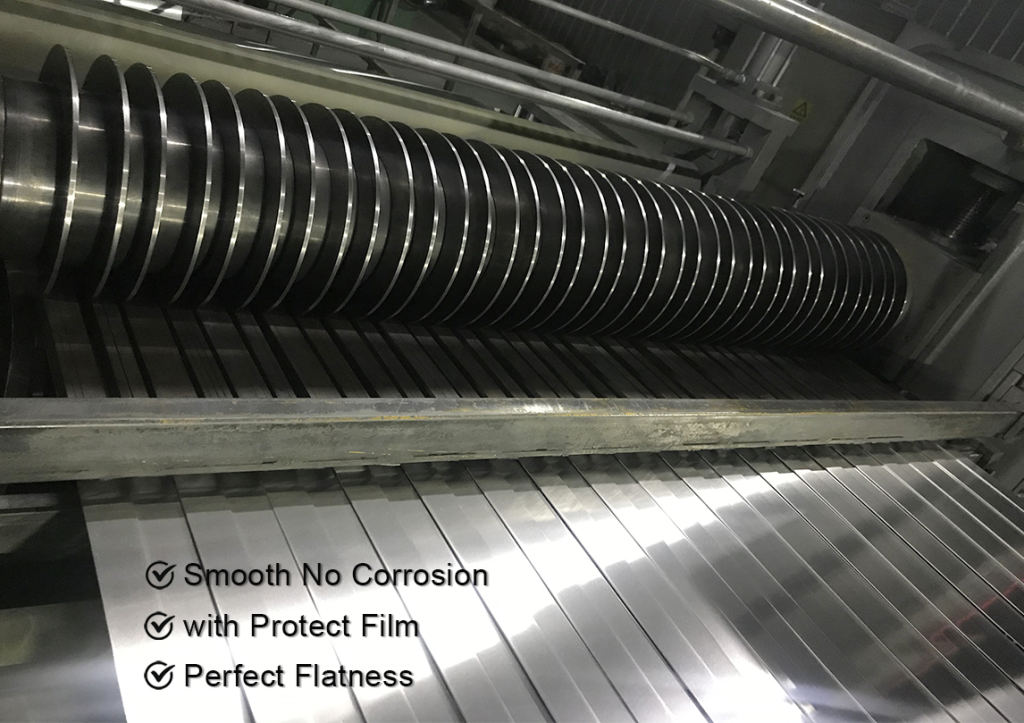
Aluminum Coil:
Alloy model: 1050、1060、1070、1100、3003、3004、3005、3104、3105、5005、5052、5083、5182、5454、5754、6061、6063、6082 aluminum etc.
Temper: F, O~H112
Thickness: 0.006 mm-8.0 mm
Width: 3mm-2600mm
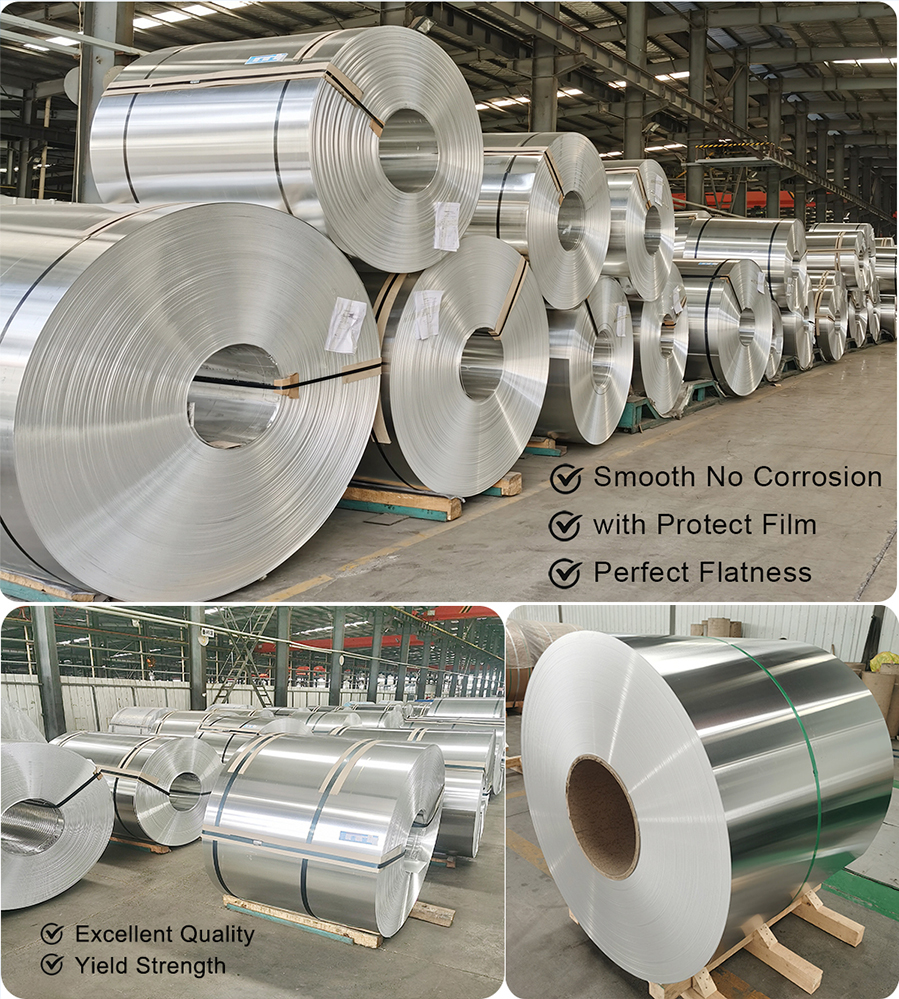
Packaging: Seaworthy wooden pallet, wooden case, aluminum plate case.
Henan Yongsheng Aluminum Co., Ltd. is located in the industrial cluster of Gongyi City, Henan Province. Our factory focuses on the production and development of aluminum products such as aluminum sheet/coil, aluminum foil, aluminum strip, color-coated aluminum sheet/coil, aluminum circle, embossed aluminum, aluminum checker plate, mirror aluminum plate, anti-skid aluminum plate and so on.
The factory covers an area of 10,000 square meters and has 276 employees. All our products are independently produced to provide you with excellent service with fast delivery, high quality assurance, factory prices and professional customer service staff. You are welcome to visit the factory and look forward to establishing a long-term good business relationship with you.
Recommendations for installing aluminum gutters
Research and planning: It is important to conduct thorough research and planning before purchasing and installing. Learn about the different product options, design styles and colors, and how they coordinate with the architectural style. The characteristics, durability and maintenance needs of aluminum components should also be understood.
Selection of appropriate sizes and specifications: Select appropriate sizes and specifications based on the size and needs of the building. Ensure that the dimensions of the protective soffit, channel boards, covering materials and gutters match the eaves, walls and roof of the building.
Additional accessories: Aluminum gutter systems are often equipped with a variety of accessories to enhance their function and performance. Accessories include downspouts, elbows, connectors, extensions and screens. These attachments help direct water from the drain to its designated location and prevent debris from entering the drainage system.
Quality and durability: Choose high-quality, corrosion-resistant aluminum to ensure long-term use and durability. Check the quality certifications and customer reviews of the products to choose reliable suppliers and brands.
Consider installation details: When selecting and installing, consider connections between components and installation details. Ensure that connections between eave boards, gutter boards, covering materials and gutters are tight, reliable and compatible with the structure of the building. Select appropriate connection and fixing methods to ensure robustness and security.
Aluminum gutters can be installed by professionals or experienced DIYers. They are typically attached to the roof edge using hangers or brackets, which Proper installation techniques, including correct sizing, slope, and secure fastening, are crucial to ensure the effective flow of rainwater. Proper installation techniques, including correct sizing, slope, and secure fastening, are crucial to ensure the effective flow of rainwater.
While some components can be installed as a DIY project, it is recommended to hire an experienced professional installer. They have the right tools, skills and experience to ensure proper installation and quality workmanship. Professional installation also ensures that components are properly connected, watertight, and reliable over time.
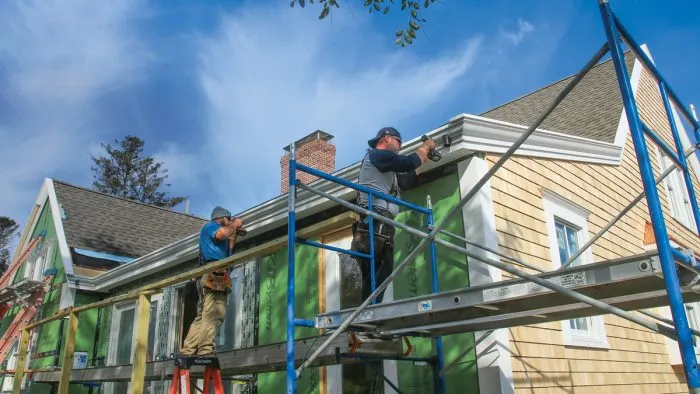
Regular maintenance
Once installed, regular cleaning and maintenance will extend the life of your aluminum components. Periodically clean buildup from eave guards, gutter panels, and gutters, and inspect their condition and connections. Repair or replace damaged components if needed.
Follow the manufacturer’s installation guidelines and recommendations. These guides provide important information about the proper installation, maintenance and warranty of the product. Be sure to follow the instructions in the guides to ensure proper installation and to keep the product warranty valid.
In conclusion, choosing and installing gutters requires careful consideration and planning. Selecting the proper size, quality and color, hiring a professional installer, and performing regular maintenance will ensure the performance and appearance of these components. Follow the manufacturer’s guidelines and recommendations for the best installation results.


